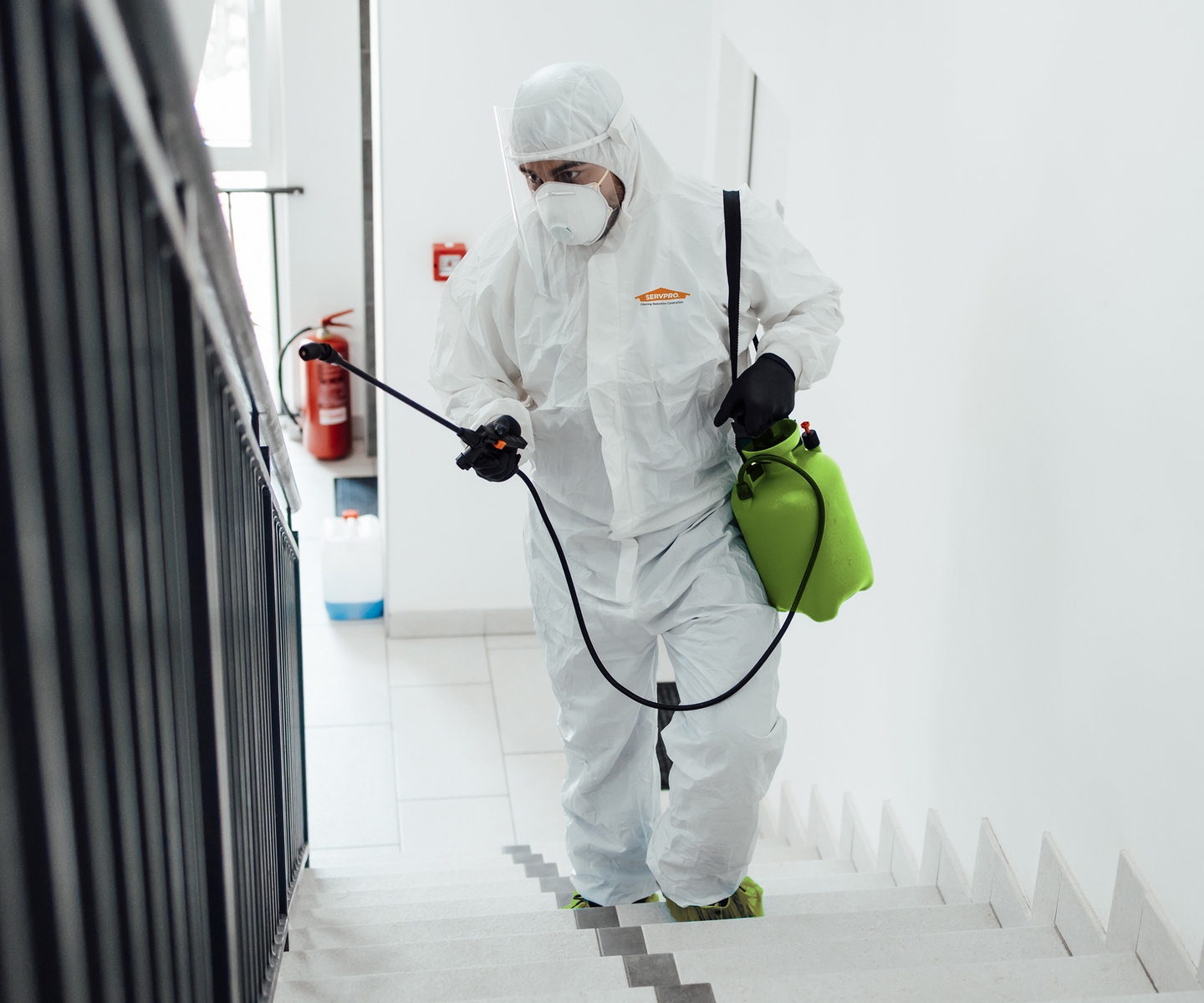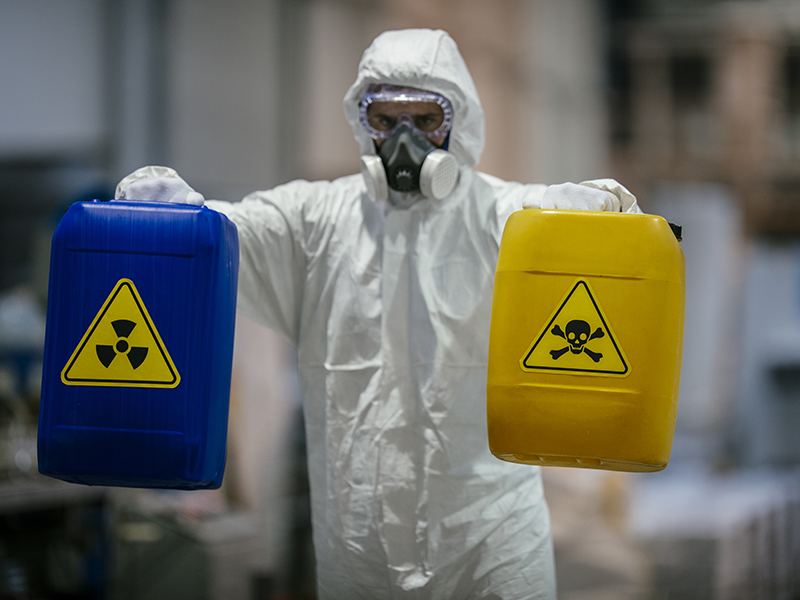Clandestine Lab Cleanup: Comprehensive Purification for Hazardous Sites
Wiki Article
Specialist Biohazard Cleansing and Decontamination for Blood, Bodily Fluids, and Hazardous Materials
The potential health and wellness risks connected with direct exposure to biohazards highlight the essential requirement for thorough handling and extensive cleaning. As we navigate the complex landscape of biohazard cleanup, comprehending the subtleties of regulations, compliance, and the customized equipment at play ends up being imperative in making sure a secure and comprehensive decontamination process.
Wellness Threats of Biohazard Exposure
Exposure to biohazards presents substantial health risks that can lead to extreme effects for neighborhoods and people alike. Biohazards incorporate a variety of biological substances, consisting of blood, physical liquids, mold, bacteria, infections, and various other possibly transmittable materials. When individuals enter into contact with these biohazards, whether with mishaps, incorrect handling, or ecological direct exposure, they encounter the threat of having significant illnesses or diseases.One of the primary health risks connected with biohazard exposure is the transmission of infectious diseases. Bloodborne virus such as HIV, liver disease B and C, and numerous microorganisms can be existing in biohazardous products, presenting a direct risk to human health. Inhaling air-borne biohazards like mold and mildew spores or coming right into call with polluted surfaces can also lead to respiratory system concerns, allergic reactions, and other unfavorable health effects.
Furthermore, biohazard direct exposure can have long-lasting health and wellness ramifications, with some diseases showing up years after the first call (Blood Cleanup). Consequently, it is critical to prioritize correct biohazard cleaning and decontamination to mitigate these health risks and ensure the safety of individuals and neighborhoods

Specialized Training for Biohazard Clean-up
When it concerns handling biohazard cleaning effectively and securely, specialized training plays a basic duty in making sure proper purification treatments are followed. Biohazard clean-up calls for particular expertise and abilities to efficiently alleviate threats related to bloodborne microorganisms, physical liquids, and dangerous materials. Specialists educated in biohazard cleanup go through extensive guideline on how to safely deal with, eliminate, and throw away biohazardous materials to stop contamination and direct exposure.Specialized training for biohazard cleanup covers a variety of vital subjects, consisting of correct individual safety tools (PPE) usage, bloodborne pathogen awareness, decontamination techniques, and dangerous waste disposal procedures. Individuals learnt biohazard clean-up are furnished with the needed proficiency to evaluate contamination levels, identify potential hazards, and execute suitable cleanup procedures in compliance with governing criteria.
Continual training and education and learning are vital in the area of biohazard clean-up to stay updated on the most recent purification modern technologies, safety and security procedures, and guidelines. By buying specialized training, biohazard cleaning experts can effectively react to emergency situation cleaning circumstances and safeguard both public health and the atmosphere.
Importance of Correct Purification Methods
Utilizing correct purification methods is important in biohazard cleanup to effectively remove harmful materials and decrease health threats. Efficient purification not only ensures the elimination of visible traces of blood, physical fluids, and various other biohazards but additionally targets undetectable pathogens that might pose severe health hazards if not effectively eradicated. By adhering to strict purification protocols, educated professionals can considerably reduce the danger of direct exposure to harmful microbes, viruses, and germs that can result in conditions or infections.Proper purification strategies involve the usage of customized equipment and anti-bacterials that are especially designed to reduce the effects of biohazards properly. Extensive cleansing and sanitation of contaminated areas are vital to prevent the spread of microorganisms and make sure a secure environment for residents. Furthermore, the proper disposal of biohazardous waste following decontamination procedures is crucial in protecting against contamination of various other surfaces or individuals.

Devices and Tools for Safe Clean-up
When dealing with blood, bodily liquids, or dangerous products, biohazard cleaning specialists click over here now depend on specialized equipment to reduce direct exposure risks and extensively decontaminate the afflicted location. Additionally, biohazard cleansing kits consisting of anti-bacterials, absorbing materials, and biohazard bags are made use of to safely dispose and have of contaminated products.Advanced cleansing tools like hospital-grade disinfectants, HEPA-filtered vacuum cleaners, and misting devices are utilized to disinfect surfaces and eliminate biohazards properly. Specialized equipment such as sharps containers and biohazard garbage disposal containers are used to securely manage sharp things and biohazardous waste materials. By utilizing the right equipment and devices, biohazard cleansing experts can guarantee a detailed cleanup process that prioritizes safety and lessens health and wellness risks for both employees and passengers of the damaged room.
Laws and Conformity in Biohazard Cleaning
Proper adherence to regulations and conformity criteria is paramount in biohazard cleaning to guarantee the security of both workers and the atmosphere. Federal government companies such as OSHA (Occupational Security and Health And Wellness Management) and the EPA (Epa) have actually developed certain standards for biohazard clean-up procedures to reduce health and wellness dangers and environmental contamination. These policies cover a range of aspects including the handling, transport, and disposal of biohazardous products, along with the needed training and protective equipment required for personnel entailed in the cleaning procedure.Biohazard cleaning companies must remain updated with these guidelines to ensure that their operations fulfill the called for security requirements. Failure to abide by these laws can lead to severe consequences, consisting of fines, lawsuit, and Read More Here threatening the wellness of individuals and the environment. By adhering to rigid policies and compliance actions, biohazard cleaning firms can successfully reduce risks and make sure a secure and complete cleanup procedure for all celebrations entailed.
Final Thought
In conclusion, biohazard cleansing and decontamination call for specialized training, correct techniques, and adherence to laws. Exposure to blood, physical fluids, and harmful materials presents significant health and wellness threats, making it important to make use of the best tools and tools for risk-free cleanup. By complying with rigorous protocols and standards, professionals can efficiently minimize the dangers connected with biohazard direct exposure and guarantee the security of both themselves and others.
As we browse the intricate landscape of biohazard clean-up, recognizing the nuances of guidelines, conformity, and the specialized devices at play ends up being important in making certain a safe and complete decontamination process. (Blood Cleanup)
When it comes to managing biohazard cleaning successfully and safely, specialized training plays a fundamental role in making sure correct purification treatments are followed.Utilizing proper decontamination techniques is important in biohazard clean-up to successfully reduce and get rid of dangerous materials health and wellness dangers. Furthermore, biohazard cleaning sets having anti-bacterials, absorbing products, and biohazard bags are used to safely dispose and contain of contaminated items.
Government agencies such as OSHA more helpful hints (Occupational Safety and Health Management) and the EPA (Environmental Defense Agency) have actually developed specific standards for biohazard cleaning procedures to reduce health threats and ecological contamination.
Report this wiki page